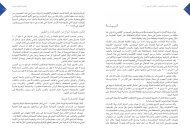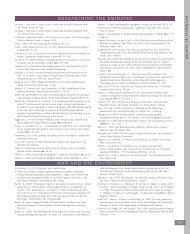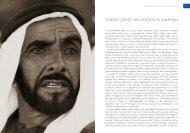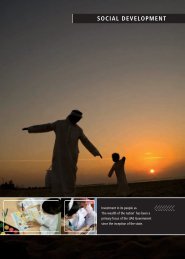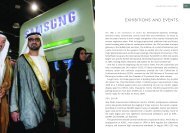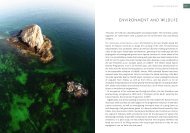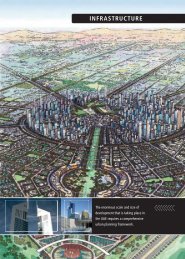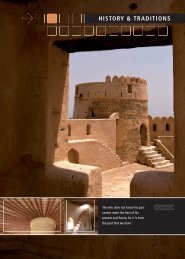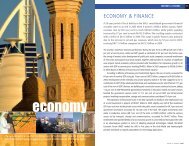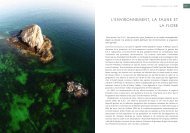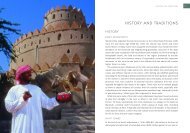You also want an ePaper? Increase the reach of your titles
YUMPU automatically turns print PDFs into web optimized ePapers that Google loves.
158UNITED ARAB EMIRATES YEARBOOK 2006standing melting pot of cultures where foreigners feel at ease. Emiratis have alwayswelcomed visitors: it is not the nature, but the scale of things that has changed.Tourism growth in the Emirates has impressed and perhaps surprised manyanalysts and commentators. The country is leading the whole region in developingtop-class tourism facilities and attracting visitors: 11,922 new rooms are due tobecome available between 2005 and 2008 (with 9628 in Dubai alone). Abu Dhabi’ssupply of new luxury hotels includes the landmark Kempinski-operated EmiratesPalace Hotel and Conference Centre, while Fujairah’s four confirmed hoteldevelopments include the five-star Kempinski Fujairah Resort and the RobinsonClub. Dubai’s first major offshore tourism development, The Palm, Jumeirah, willhave 30 to 40 hotels when it is completed. Nine of these were already confirmedby mid-2005. The other ‘Palms’ will also create numerous sites for hotels. Aconcentration of land-based hotels along the Sheikh Zayed Road/Al Barsha roadincludes at least 12 future projects that will add 2948 rooms. Among these is thefive-star, 250-room Armani Hotel in the Burj Dubai development, due to open in2008, and the five-star, 400-room Kempinski Hotel in the Mall of the Emirates,due to open in November 2005. Meanwhile, new developments on Dubai’sJumeirah coast involve at least seven hotel and resort developments and thecoastline north of Dubai Creek is also receiving attention with six confirmed hotelsand resorts.Good planning has been the key to growth of tourism in the <strong>UAE</strong>. It is not justabout building hotel rooms but about creating multi-faceted attractions, providingworld-class infrastructure and ensuring that the very elements that attract visitorsare respected and protected. All this requires coordination and management. Eachemirate has its own dedicated tourism development authority or department. Inrecent years these have grown in size and capability.Dubai’s growth manager in the hotel and tourism sector is Dubai Tourism andCommerce Marketing Department (DTCM), which oversees the licensing of hotels,hotel apartments, tour operators, and tour guides, and promotes and marketsDubai through a network of 14 Overseas Representation (OR) offices. DTCM hasplayed a key role in achieving the impressive figure of 5.42 million guests at372 hotels and hotel apartments in 2004. The UK is the largest source marketof visitors to Dubai with 605,240 people travelling there from the UK in 2004,a 32 per cent increase from 458,451 in 2003. Other important non-Arab marketsfor <strong>UAE</strong> tourism are Germany, France, Italy and China. DTCM also managesheritage sites and the region’s first and only dedicated cruise terminal. The3300-square-metre facility is the world’s first ISO-certified cruise terminal operatedby a government tourism department. It was expected to receive 16 cruise shipsin 2005 and experience a 33 per cent increase in cruise tourists over the 8000arrivals in 2004.



